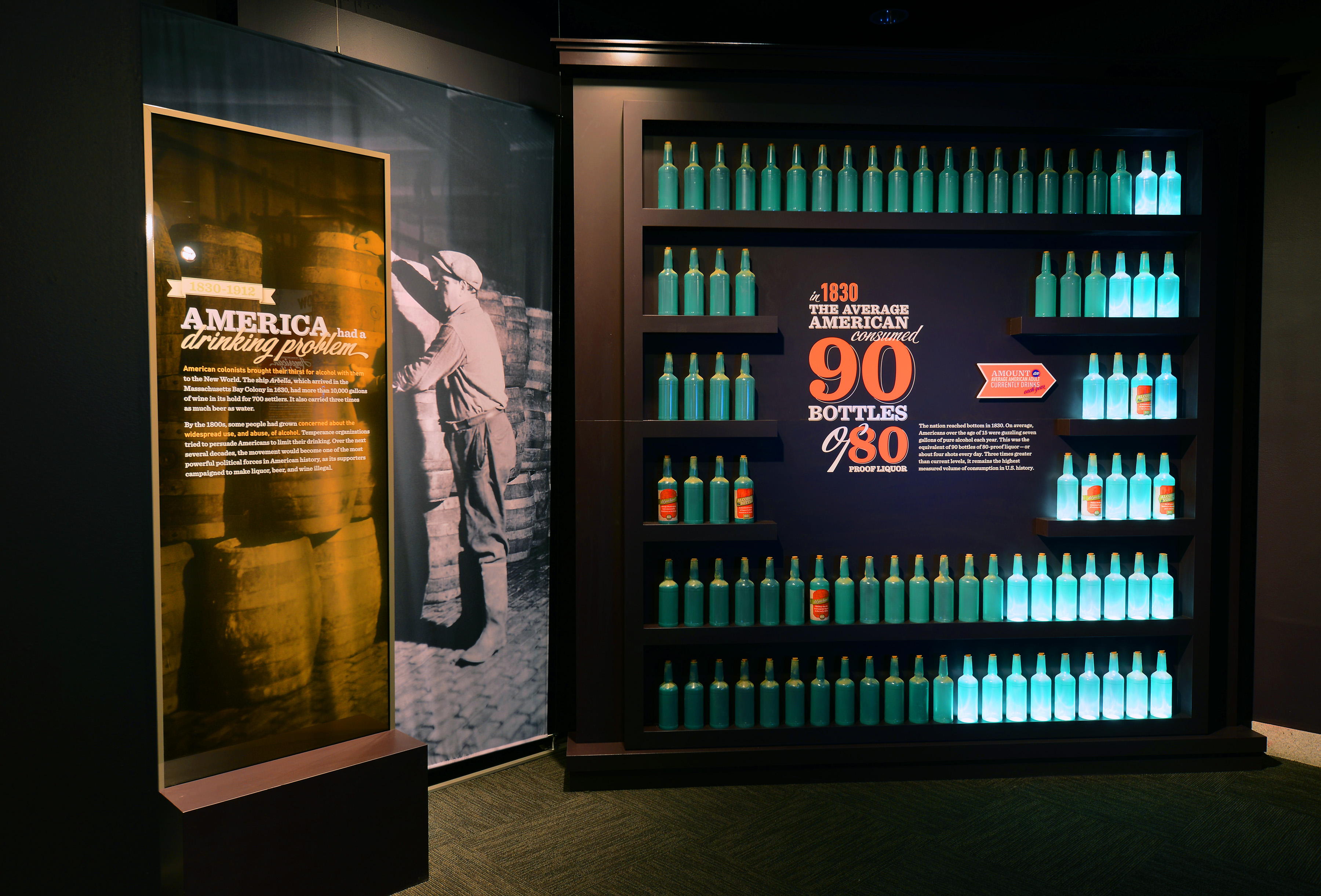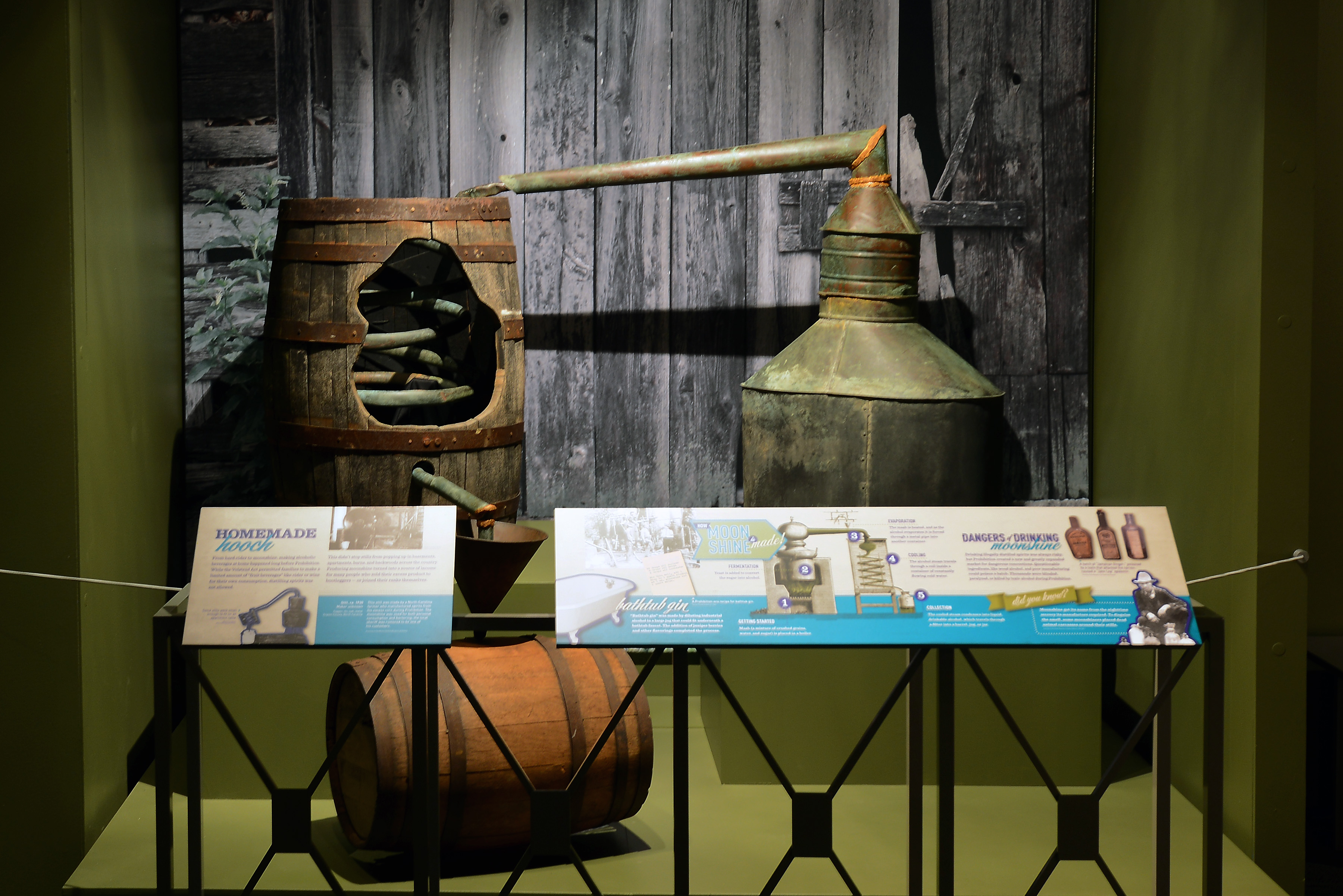Meet Leslie Przybylek, lead curator for the new American Spirits: The Rise and Fall of Prohibition exhibition, on display beginning Saturday, Feb. 10. Leslie has been hard at work bringing this traveling exhibit from the National Constitution Center in Philadelphia to the History Center, adding a local connection that brings to life Prohibition-era Pittsburgh.
Read our interview with Leslie for her take on the new exhibit and what it is about the ’20s that continues to fascinate us, nearly a century later.

Why do you think the 1920s are such a prolific period in American history?
LP: I don’t think the 1920s were truly more prolific than other decades; each period in American history has its own stories to tell. I think it’s more about us. I think people find the 1920s more interesting because the period is more recognizable than earlier decades. The issues still seem relevant. From the youth culture epitomized by the flapper to debates over private desire versus public welfare, the 1920s feel like a world closer to our own. It was also one of the first decades truly shaped by emerging mass media such as the movies and radio, so there were more commonalities across regional lines, and some characters such as the gangster were picked up and celebrated in that media almost from the moment they emerged on a national scale.
What’s your favorite part of American Spirits: The Rise and Fall of Prohibition?
LP: That is always a hard question for a curator! There are so many great stories. I think the section that looks at the many ways people tried to get around the law is fascinating. From the Vino Sano grape brick—a molded grape concentrate that came with instructions warning people not to put it in a jug with water and “leave that jug in a cool cupboard for 21 days, or it would turn into wine”—to a flask disguised as a camera, these artifacts illustrate why it was almost impossible to try and legislate controls on human desire.
What’s the most interesting thing you learned?
LP: From beginning to end, Prohibition brought together strange bedfellows and surprising political coalitions that both gave it legislative life and then dismantled it. It really wasn’t just about who approved of drinking alcohol or not; it emerged from debates over fundamental issues of work, family life, gender, immigration, and identity, and, yes, taxes—all things we still wrestle with today.
Were there any surprises while researching local history for this exhibit?
LP: I did not realize the extent to which, in just a few years, many people in Western Pennsylvania grew deeply frustrated with the corruption and community vice that sprang up around Prohibition. There’s an impressively large file of material in the National Archives (College Park, Md.) filled with letters area residents sent to the Justice Department, in many instances pleading with Prohibition enforcement officials such as Mabel Walker Willebrandt to send someone to their community to help clean up the problems. Some enterprising local citizens also asked if there were any paying jobs connected with that work.
What do you hope visitors take away from this exhibit?
LP: I think people should visit American Spirits because it is a fun and engaging look at a legendary period in our history, a period that still reverberates in our society today. Pennsylvania was one of many states where it ultimately became harder to buy alcohol after Repeal than during the 1920s, thanks to laws and controls put in place in 1933. At its heart, the story of Prohibition is a story of American democracy, and how the process both worked and didn’t. I hope visitors come away from the exhibit understanding what motivated people on both sides of the issue and how the 13-year experiment of Prohibition left a lasting imprint on our national consciousness.

American Spirits: The Rise and Fall of Prohibition is on display at the History Center beginning Feb. 10 through June 2018.
Kim Roberts is the communications coordinator at the Heinz History Center.
